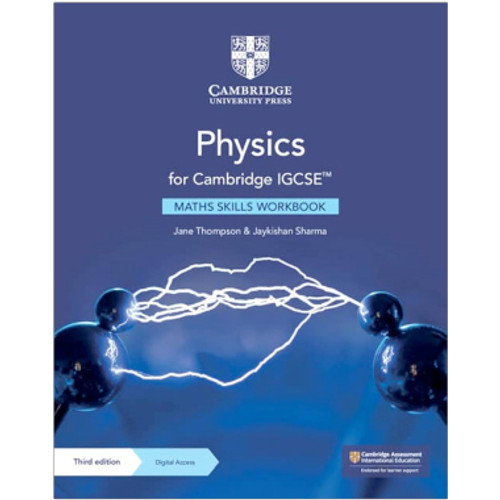Cambridge IGCSE™ Physics Workbook with Digital Access (2 Years)
Author/s: David Sang, Darrell Hamilton
This write-in workbook with digital access is the perfect companion to the coursebook.
Learners have the opportunity to practise their essential science skills, including data presentation and analysis, consolidate their understanding, and apply their learning to new situations.
Exercises are structured into three levels of increasing complexity: ‘focus, practice and challenge’. They first develop learners’ foundation skills, consolidate these skills through practice and then target higher order thinking skills.
As an exercise progresses, the amount of support is also reduced, enabling students to become confident, responsible learners. Answers for all questions and exercises can be found online at www.cambridge.org/go.
The resource is written in clear, accessible language with a ‘Key Words’ feature with key vocabulary, terms and definitions in context.
Features:
-
The write-in workbook with digital access is designed to work with the coursebook and other resources in the series and gives the learner the valuable opportunity to consolidate their knowledge, hone their essential science skills, and improve their fluency in answering questions and handling command terms in preparation for their examinations
-
The resource is written in clear, accessible language. The ‘Key Words’ feature highlights key vocabulary and definitions to assist English as a second language learners
-
A glossary of the words and definitions from ‘Key Words’ is compiled and included at the back of the book
-
‘Learning Intentions’ at the beginning of each section are aligned to syllabus Learning Objectives and help the learner focus on the exact skills and knowledge they will need to make the most of the exercises that follow
-
Exercises are structured into three levels of increasing complexity: ‘focus, practice and challenge’ to help develop responsible, independent learners. The ‘challenge’ exercises use core and supplementary learning objectives, but incorporate higher order thinking skills, increasing the difficulty of the material and stretching learners’ abilities
-
Students are given frequent opportunity for peer or self-assessment to encourage reflective, independent learners and give teachers the opportunity to gather information about student understanding, to adapt future teaching and revision sessions
-
Tips are included to support students around exercises where students are known to frequently struggle
-
Answers can be found online at www.cambridge.org/go. For more information on how to access and use your digital resource, please see inside the front cover.
Contents
- How to use this series
- How to use this book
- Introduction
- 1. Making measurements
- 2. Describing motion
- 3. Forces and motion
- 4. Turning effects
- 5. Forces and matter
- 6. Energy changes and transfers
- 7. Energy resources
- 8. Work and power
- 9. The kinetic model of matter
- 10. Thermal properties of matter
- 11. Thermal energy transfers
- 12. Sound
- 13. Light
- 14. Properties of waves
- 15. The electromagnetic spectrum
- 16. Magnetism
- 17. Static electricity
- 18. Electrical quantities
- 19. Electrical circuits
- 20. Electromagnetic forces
- 21. Electromagnetic induction
- 22. The nuclear atom
- 23. Radioactivity
- 24. Earth and the Solar System
- 25. Stars and the Universe






